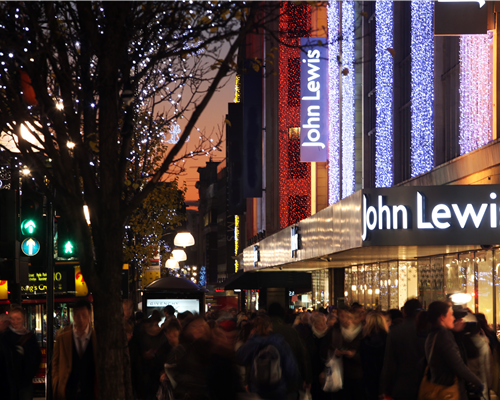The future of retail rests in the co-existence of channels, with the high street, web, catalogues and other media all playing their part in the shopping process. The scant attention paid to the role of digital in Mary Portas’ recent review of the British high street is thus staggering. Though physical stores – particularly in major retail centres such as London’s Oxford Street – will doubtless continue to be recognised as a retail brand’s flagship, any vision for the future of the high street is irrelevant if digital is not part of its story: the shop floor is becoming a showroom for online shoppers.
Where once businesses debated bricks and mortar versus mail order, the retail landscape is now multifaceted and more complex. Increasingly, traditional high street stores are venturing into online, with brands such as John Lewis and Next establishing a powerful digital presence. And, by the same token, pure online players are entering the high street market, with eBay opening a Christmas boutique in December 2011 and Amazon reportedly planning to set up a physical outlet to sell its Kindle products, among others.
Clearly, then, no benefit can be gained from tying shoppers down to one point of interaction – physical or virtual. On the contrary, newly commissioned research from GI Insight demonstrates that consumers today shop through a range of channels. Indeed, the study, which takes in the responses of more than 1,000 UK consumers (and is representative by age, income level, social class and region), reveals that when it comes to favourite retailers, 63% of respondents say they purchase from both a brand’s website and its high street store, confirming that UK consumers are not wedded to a single purchasing channel when it comes to the companies they prefer and buy from most.
Despite the growth of internet shopping, consumers today still use high street stores to examine and test a great many products prior to final purchase, even if they ultimately intend to buy online. The popularity of e-commerce may be increasing, but people still use the high street as a showroom to try out, try on, and weigh up many potential purchases. Indeed, type of product has a major effect on the path of the customer journey: 73% of consumers prefer to examine and test bulky products in person (bicycles, garden tools, furniture) and 69% choose to try on fashion items (clothes, sun glasses, accessories) in-store, even if they make final purchase online. This is in contrast to standardised products such as CDs, DVDs and books, where the trend is reversed: 69% say they make these types of purchases directly online.
The modern shopping process, one must therefore conclude, is a multi-dimensional activity. Customers regard brands as unified wholes and expect the same treatment, recognition and attention regardless of whether they are shopping online or in a store. This is supported by the finding that UK consumers are almost evenly split when it comes to the channel they prefer to redeem their loyalty points through: 54% in store versus 46% online. Clearly, retailers should not presume that customers will redeem their points via the same channel through which they purchased and, in fact, should ensure loyalty scheme members are rewarded with vouchers and points which can easily be used via either channel.
Retail is no longer simply an activity in pursuit of a commodity; it is a social experience that has moved beyond hitting the high street. Consumers today actively engage with both retailers and related ‘communities’ online, canvassing for recommendations from friends and social networks, checking reviews from previous customers, and gathering news on impending sales events and discount offers.
With online behaviour progressively permeating the high street – and GI Insight’s research showing there is logic to consumer behaviour across multiple channels – it is thus remarkable that Portas’ recommendations largely ignore the role of digital. Portas has overlooked a fundamental reality: that consumers using a range of channels to shop – not those tied to a sole purchasing point, including the web – are critical to the future of any retail brand and are, ultimately, the most valuable customers.
UK consumers typically arrive at point of purchase via a combination of channels; their journey is rarely linear. Yet, by the same token, it is not wholly unpredictable, with certain products triggering different types of behaviours and trends. Appreciating that customers regard brands in an holistic fashion ensures relationships are grown and nurtured regardless of channel.
As retail evolves across virtual and physical domains, understanding the importance of online for the high street, and vice-versa, is essential. Retailers must develop customer relationships across multiple touch points so that consumers get more from their retail experiences – whether their shopping involves a visit to a store, checking a catalogue, going online or using a voucher they received on a smartphone.
The key to success across multiple channels is to put in place a longer-term customer communications programme, using data to address consumer behaviour and build loyalty through tailored offers that demonstrate genuine insight. Retailers need to look at what their customers buy, what they are spending, and how they purchase in order to determine how better to motivate them to remain loyal or purchase more – and more frequently. Arguably, it is the understanding of consumer behaviour and the implementation of a multi-channel approach which may well save the high street: bricks must coexist with clicks.






